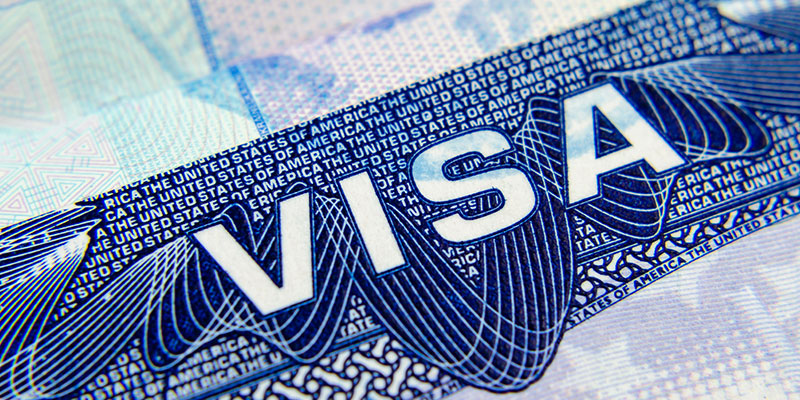
In this article you will read about:
Highly skilled Singaporean and Chilean professionals have a quota set apart for them in the H1B draw. It is called the H-1B1 and is similar to other employment-based visas like the H1B. It allows professionals with specialized education, skills, or training.
Let's take a closer look at the H-1B1 visa and how you can acquire one.
The H1B1 is a result of the Free Trade Agreement between the US, Singapore, and Chile in 2004. Under this agreement, applicants with a valid Chilean or Singaporean passport can temporarily apply for the H-1B1 to work and live in the US.
Per year quota
In the 2004 FTA agreement, it was decided that 6800 visas would be allotted for the H-1B1 applicants. This is divided into a quota of 5400 visas for Singapore, and 1400 visas for Chile reserved every year.
Criteria for employers
The employers for H1B1 would meet the same eligibility criteria for H1B employers. They follow these steps to initiate and carry forward the H1B1 application:
STEP 1
Offer a prospective job offer to a professional with a Singaporean or Chilean passport:
This job offer will have to meet specialty occupation requirements in which the professional will need specialized education, training, or skills to perform the role.
STEP 2
File for certification of an LCA:
This will require the Form ETA-9035E from the office of the Department of Labor. Through this form, the employer provides a guaranty to the prospective employee and the US government that:
The Labor Condition Application approval is the most important step in the H1B1 application process. An H1B1 employee working in the absence of an approved LCA is considered illegal.
STEP 3
Fee payment
Fees for the H1B1 application process are similar to those of H1B fees, with the exception of the Fraud Prevention and Detection fee and the Premium Processing fee (premium processing is not available for H1B1 visas).
STEP 4
Documentation
The employer will now submit documentation supporting the H1B1 application, including proof of the employee's Singaporean or Chilean citizenship (passport copy), tax filing information, and wage reports of what is being paid to state employees.
STEP 5
Application procedure begins
Once the employer has a copy of the LCA approved by the Department of Labor, the application procedure can begin.
Criteria for employees
As stated above, there are eligibility criteria and documentation requirements for employees applying for H1B1. Let's look at what these are in detail:
Processing fee
The processing fee for the H-1B1 includes the application fee of USD190, similar to other H visa applications, and a fee for issuance of the visa, which is dependent on your location.
The receipts from the payment will act as proof that you have completed the payment. They will have to be included in the application file either online or at the interview.
Also Read: The US H1B Visa: Everything You Need to Know
The application process for H-1B1 is similar to that of other application processes. Let's look at a step-by-step breakdown of the process:
STEP 1
Filling in and filing DS-160 Form
The DS-160 is the standard form used in the non-immigrant visa application process. It is available in different languages on the local US embassy website where you are applying from. This form has to be filled in accurately.
STEP 2
Scheduling the interview
Scheduling the US embassy interview is the next step after correctly filing your DS-160.
STEP 3
Submitting Documentation
The interview is the site for document submission. You will need to prepare the following documents for submission at the interview:
STEP 4
Appearing at the interview
The interview will be held at the US embassy or consulate office. You can expect your fingerprints to be taken if this is your first time in the US. You will also have an interview session with an immigration officer where they will confirm details about the job offered, information filled out in the forms, and your intentions of returning once your H-1B1 expires.
Processing time
H1B1 visa processing time can vary depending on the country you're applying from and fluctuations based on the season. But you can expect a wait time of four to six months for the processing to be complete. H1B1 Premium Processing is not an available option. You should contact the US Embassy office you applied to for the best estimate.
Another avenue to pursue updated information on your application is the DOS (US Department of State) website. Here, you will be able to input details like your application ID, case number, and location to find updates on your case.
There are many advantages that the H-1B1 holds. It can be indefinitely renewed or issued. It is also transferable among US employers, though a new one is required for each new employer. With the transfer of employers, the employee cannot start working until the new H-1B1 is approved.
The H1B1 usually has a validity of 18 months. It can be extended for a year, and you can use the option of extending it for four to six months when you see that your visa is approaching expiry. You can get your H1B1 extension or renewal approved by proving that you are gainfully employed in the US and intend on returning to your home country at some point.
You will find all the answers to your H1B queries with TechFetch H1B, the largest database of H1B information.
**Disclaimer: Please note that immigration laws and rules are subject to change. For the latest updates, please refer to the USCIS website.